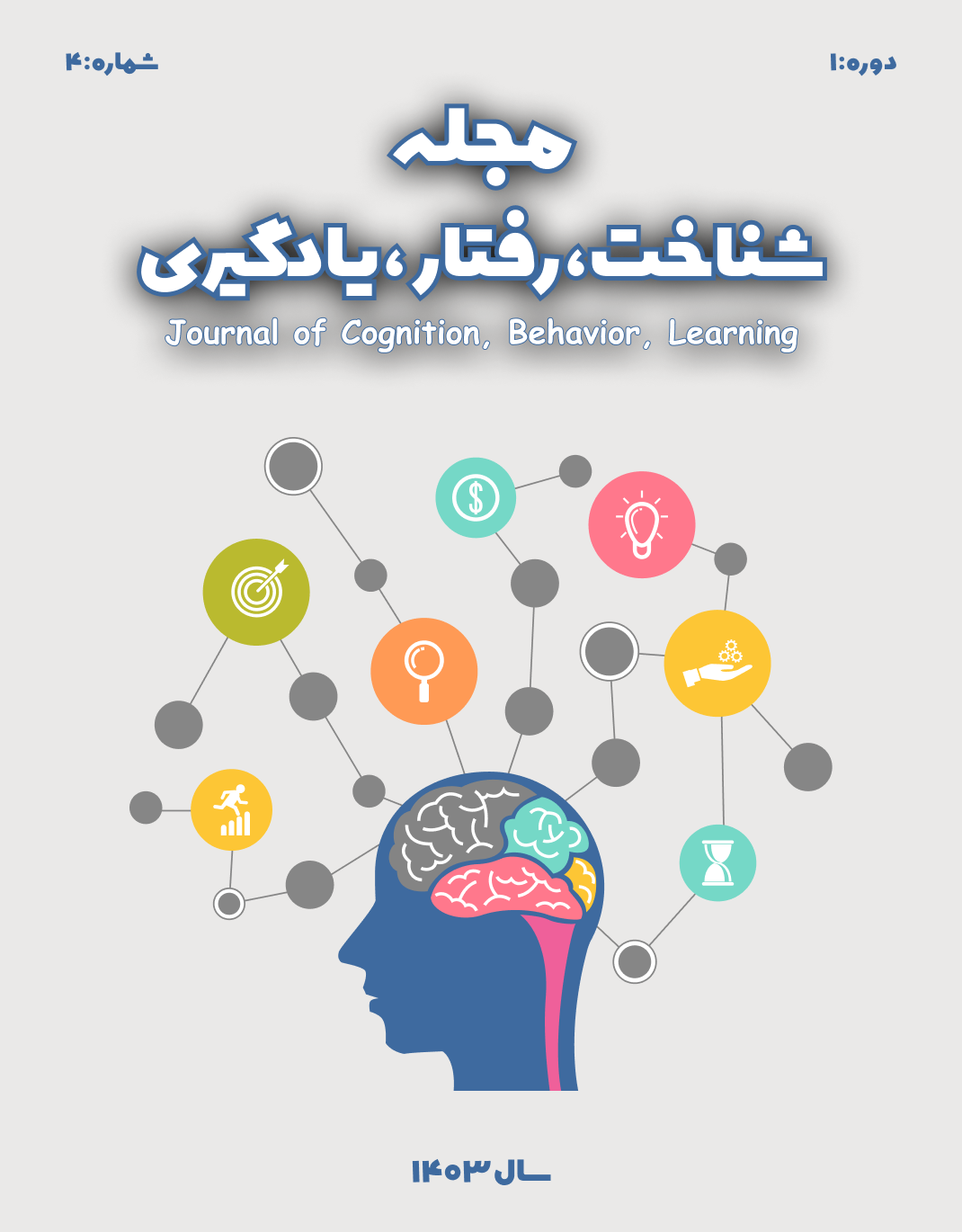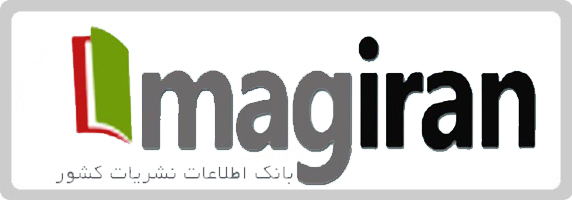بررسی رابطه میان جهت گیری تدریس، توانمندی منش و مهارتهای اجتماعی-هیجانی با کیفیت زندگی و نقش میانجی خودپنداره در معلمان زن دوره دوم متوسطه
کلمات کلیدی:
جهتگیری تدریس, توانمندی منش, مهارتهای اجتماعی-هیجانی, خودپنداره, کیفیت زندگی, معلمان زنچکیده
هدف از این پژوهش بررسی رابطه میان جهتگیری تدریس، توانمندیهای منش، مهارتهای اجتماعی-هیجانی و کیفیت زندگی با نقش میانجی خودپنداره در معلمان زن دوره دوم متوسطه است. مطالعه حاضر از نوع توصیفی-همبستگی است که با استفاده از روش نمونهگیری خوشهای تصادفی بر روی ۴۱۰ معلم زن انجام شد. ابزار گردآوری اطلاعات شامل پرسشنامههای استاندارد در حوزه جهتگیری تدریس، توانمندی منش، مهارتهای اجتماعی-هیجانی، کیفیت زندگی و خودپنداره بود. دادهها با استفاده از نرمافزارهای SPSS-27 و AMOS و آزمونهای همبستگی، تحلیل مسیر و مدلیابی معادلات ساختاری تحلیل شدند. نتایج تحلیل مسیر نشان داد که جهتگیری تدریس (β = 0.22, p < 0.001)، مهارت اجتماعی-هیجانی (β = 0.13, p = 0.013) و خودپنداره (β = 0.37, p < 0.001) تأثیر مستقیم معناداری بر کیفیت زندگی دارند. اما خودپنداره تنها در رابطه بین مهارت اجتماعی-هیجانی و کیفیت زندگی نقش میانجی ایفا کرد (β = −0.109, p = 0.003) و در رابطه بین توانمندی منش و کیفیت زندگی نقش میانجی معناداری نداشت (p = 0.188). یافتهها نشان میدهند که توانمندی منش و مهارتهای اجتماعی-هیجانی عوامل تأثیرگذار بر کیفیت زندگی معلمان هستند، در حالیکه نقش میانجی خودپنداره تنها در برخی مسیرها تأیید شد. این نتایج بر ضرورت تمرکز بر آموزش مهارتهای اجتماعی و تقویت ویژگیهای شخصیتی در برنامههای توسعه حرفهای معلمان تأکید دارد.
دانلودها
مراجع
References
Abdollahzadeh, B., Jabari, N., & Bagherpour, M. (2023). Classroom Teaching Management Style with an Interactive Approach to Self-Regulated Learning Strategies in the Health System. Clinical Excellence, 13(2), 39-54. http://ce.mazums.ac.ir/article-1-785-fa.html
Ames, C., & Archer, J. (1988). Achievement goals in the classroom: Students' learning strategies and motivation processes. Journal of Educational Psychology, 80(3), 260-267. https://doi.org/10.1037/0022-0663.80.3.260
Ariyan, J., Moher, G. S., & Harafteh, F. S. K. (2024). The Effectiveness of Self-Regulated Learning Strategies Teaching on Academic Achievement Motivation and Academic Self-Efficacy of Sixth Grade Male Students of Iranshahr County. PDMD, 3(4), 165-177. https://doi.org/10.61838/kman.pdmd.3.4.12
Baldwin, A. (2023). The role of emotional intelligence in teacher-student relationships. International Journal of Educational Psychology, 12(4), 245-260.
Bonomi, A. E., Patrick, D. L., Bushnell, D. M., & Martin, M. (2000). Validation of the United States' version of the World Health Organization Quality of Life (WHOQOL) instrument. Journal of Clinical Epidemiology, 53(1), 1-12. https://doi.org/10.1016/S0895-4356(99)00123-7
Byrne, M. (2023). The importance of growth mindset in higher education: Implications for student success. Journal of Higher Education, 29(1), 140-155.
Charles, J. (2023). Integrating social-emotional learning into the curriculum: Challenges and opportunities. Journal of Curriculum Studies, 45(2), 175-190.
European, C. (2013). Supporting teacher educators for better learning outcomes. Teacher Professional Development. https://school-education.ec.europa.eu/en/discover/publications/supporting-teacher-educators-better-learning-outcomes
Fredriksén, A., & Hultgren, A. (2019). Exploring the impact of emotional regulation on student engagement and learning outcomes. Educational psychology review, 31(4), 569-586.
Gardner, H. (1983). Frames of mind: The theory of multiple intelligences. Basic Books. https://books.google.de/books/about/Frames_of_Mind.html?id=ZvJKPgAACAAJ&redir_esc=y
Gilbert, M. (2018). Student performance is linked to connecting effectively with teachers. Journal of Research in Innovative Teaching & Learning, 12(3), 311-324. https://doi.org/10.1108/JRIT-05-2018-0010
Hosseinpoor, S., & Sardaari, P. D., B. (2022). The Use of Self-Regulated Learning Strategies in Combating Academic Burnout [Research]. Quarterly Journal of Education, 37(4), 119-136. http://qjoe.ir/article-1-1539-en.html
Latham, G. P., & Stger, J. (2008). Goal setting and task performance: 1969-2006. Organizational Behavior and Human Decision Processes, 109(2), 124-139.
Magnusson, D., & Hmelo-Silver, C. E. (2009). Promoting understanding through inquiry: The role of teachers' beliefs in the classroom. International Journal of Science Education, 31(15), 2043-2066.
Mills, H. (2024). Strategies for enhancing self-regulated learning in secondary education. Educational psychology review, 36(1), 55-72.
Morgan, L., Close, S., Siller, M., Kushner, E., & Brasher, S. (2022). Teachers' experiences: Social emotional engagement-knowledge and skills. Educational Research, 64(1), 41-59. https://doi.org/10.1080/00131881.2021.1988865
Oecd. (2019). Teachers and leaders in schools: A policy review.
Patton, M. Q. (2023). Qualitative research and evaluation methods: Enhancing educational practices through in-depth analysis. International Journal of Qualitative Studies in Education, 36(4), 420-435.
Perry, N. E., VandeKamp, K. O., Mercer, L. K., & Nordby, C. J. (2023). Investigating Teacher-Student Interactions That Foster Self-Regulated Learning. In Using Qualitative Methods To Enrich Understandings of Self-regulated Learning (pp. 5-15). https://doi.org/10.4324/9781410608529-2
Peterson, C., & Seligman, M. E. P. (2004). Character strengths and virtues: A handbook and classification. Oxford University Press. https://books.google.de/books/about/Character_Strengths_and_Virtues.html?id=QqPiF1C7cy4C&redir_esc=y
Retelsdorf, J., Butler, R., Streblow, L., & Schiefele, U. (2010). Teachers' goal orientations for teaching: Associations with instructional practices, interest in teaching, and burnout. Learning and Instruction, 20(1), 30-46. https://doi.org/10.1016/j.learninstruc.2009.01.001
Ruch, W., & Heintz, S. (2020). Character strengths and job satisfaction: Differential relationships across occupational groups and adulthood. Applied Research in Quality of Life, 15, 503-527. https://doi.org/10.1007/s11482-018-9691-3
Ryan, R. M., & Deci, E. L. (2000). Self-determination theory and the facilitation of intrinsic motivation, social development, and well-being. American psychologist, 55(1), 68-78. https://doi.org/10.1037/0003-066X.55.1.68
Ryu, S. H. (2015). Curriculum orientations and professional teaching practices reported by Korean secondary school home economics teachers and teacher educators The Ohio State University].
Salovey, P., & Mayer, J. D. (1990). Emotional intelligence. Imagination, Cognition and Personality, 9(3), 185-211. https://doi.org/10.2190/DUGG-P24E-52WK-6CDG
Shen, B., Wang, Y., Yang, Y., & Yu, X. (2023). Relationships between Chinese university EFL learners' academic emotions and self-regulated learning strategies: A structural equation model. Language Teaching Research. https://doi.org/10.1177/13621688221144832
Skaalvik, E. M., & Skaalvik, S. (2014). Teacher self-efficacy and teacher burnout: A study of relations. Social Psychology of Education, 17(3), 491-505. https://www.sciencedirect.com/science/article/abs/pii/S0742051X09002479
Yalçın, M., & Erdoğan, M. (2023). Analyzing the effect of teacher feedback on student performance in mathematics. Journal of Mathematics Education, 15(3), 200-215.
Zhang, L., & Wang, Y. (2023). The relationship between teacher emotional intelligence and student academic performance: A meta-analysis. Educational Psychology, 45(2), 123-135.
دانلود
چاپ شده
ارسال
بازنگری
پذیرش
شماره
نوع مقاله
مجوز
حق نشر 2025 لیلا قنواتی , سقا افراخته, حسین بیگدلی (نویسنده)

این پروژه تحت مجوز بین المللی Creative Commons Attribution-NonCommercial 4.0 می باشد.





